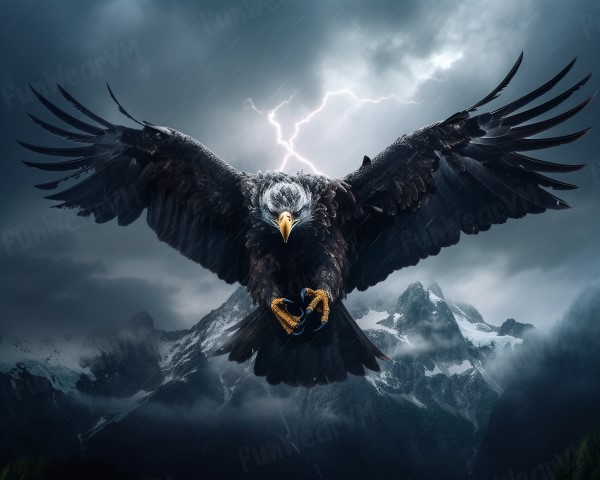
A thunderbird is a cryptozoological creature associated with large bird-like animals that live anywhere from Northern Canada and Alaska down to Central America. Similar animals often appear in Native American mythology; some tales tell of enormous eagles strong enough to carry whales back to their nests. The thunderbird is said to create thunder by flapping its wings (Algonquian ), and lightning by flashing its eyes (Algonquian, Iroquois ). It is considered a supernatural being of power and strength, and sometimes a benevolent nature spirit that helps humans in times of need. However, it can also be dangerous and destructive, especially to its enemies, such as the underwater panther or Great Horned Serpent that rules the underworld.
How did the thunderbird legend originate?
The thunderbird legend is prevalent among many North American indigenous peoples, especially along the Pacific coast and in the Great Lakes area. It is also found in various forms among some peoples of the American Southwest, East Coast of the United States, Great Plains, and even South America. The origin of the legend is not clear, but it may have been influenced by the observation of real birds, such as eagles, condors, or vultures, that have impressive wingspans and can soar high in the sky. Some scholars have also suggested that the legend may have been inspired by ancient fossils of pterosaurs or other extinct flying reptiles that were discovered by Native Americans. The thunderbird motif is frequently depicted in the art, songs, and oral histories of many indigenous cultures, often as a symbol of power, authority, or protection.
What are some examples of thunderbird stories?
There are many stories and variations of the thunderbird legend among different tribes and regions. Here are some examples:
- The Passamaquoddy tribe of Maine tells of a quest of two young men who went to find the source of thunder high in the mountains. They encountered a giant bird that was chained to a rock and guarded by two smaller birds. The young men managed to free the bird, which thanked them and flew away, creating thunder with its wings.
- The Ojibwe tribe of Wisconsin tells of how Nanabozho, the culture hero, created the thunderbirds to fight the underwater spirits that threatened to flood the earth. The thunderbirds lived in the four directions and arrived with the other birds in the springtime. In the fall, they migrated south after the end of the underwater spirits’ most dangerous season.
- The Menominee tribe of Wisconsin tells of a great mountain that floats in the western sky on which dwell the thunderbirds. They control the rain and hail, and delight in fighting and deeds of greatness. They are the enemies of the great horned snakes and have prevented these from overrunning the earth and devouring humankind. They are messengers of the Great Sun himself.
- The Sioux tribe of South Dakota tells of a thunderbird named Wakinyan who was sent by Wakan Tanka (the Great Spirit) to teach humans how to live in harmony with nature. Wakinyan taught them how to hunt buffalo, make fire, and use tobacco for ceremonies. He also gave them his sacred pipe as a symbol of peace.
What are some references for more information on the thunderbird?
If you want to learn more about the thunderbird legend and its variations, you can check out these url linked references:
